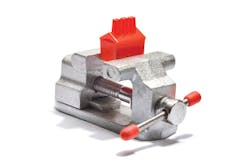High Property Tax Assessments: Should Your Company Appeal?
While specific state and local tax provisions vary, business property tax assessments should reflect a property’s fair market value. When the valuation is substantially higher than expected, managers should question the methodology and validity of the market value assessment. This questioning may lead managers to consider formally appealing a property tax assessment.
A variety of factors may account for a property tax assessment that seems unduly high. For example, a substantial portion of a manufacturing facility’s worth is made up of its machinery and equipment, which is included in the list of assets that are evaluated when calculating the property tax assessment. The depreciation factor and tables used by the tax assessor may conclude that machinery, equipment or other assets retain values higher than what the manufacturer deems appropriate.
Denial of a property tax exemption may also account for a higher than expected assessment. A manufacturer may have recently installed new equipment to reduce water, air or noise pollution. While new equipment purchases and property improvements generally result in higher assessments, such installations may be exempt under applicable property tax provisions. The tax assessment, though, may have assigned property value to that pollution reduction effort.
Various tax jurisdictions also offer property tax exemptions for inventories, software licenses and intangible property, custom or off-the-shelf software packages, and other assets. A property tax assessment may have included such items if exemptions were not applied for in a timely fashion.
Erroneous records
There may also be errors in the tax assessor’s tax records. For example, vehicles may be used among several locations, but should only have taxable situs for one location. Erroneous tax assessment records may be assigning the value of these assets to the wrong location or attributing these assets to more than one property, resulting in a multiple assessment on the tax roll.
Leased equipment is considered the property of and taxable to the lessor, not the lessee. Tax assessment records may be assigning ownership of that equipment to the lessee; when properly assessed, it would be assessed to the lessor.
Obsolete machinery and ghosts assets—assets still on the fixed asset list but taken out of service—may still be included in the valuation at full market value. Inclusion of such items in asset listings contributes to higher tax assessments than what would be deemed appropriate.
Differences in depreciation calculations, denials of exemptions or errors in a tax assessor’s records can all leave a manufacturer feeling that a current tax assessment is not fair or equitable. Taxpayers are able to contest this valuation by appealing the value to the assessor’s review board. Tax protests are generally allowed during the summer months, with tax payment due later in the year.
How should a manufacturer determine whether or not an appeal is worthwhile? Should a property tax consultant be hired? What appeal strategies exist? How do specific state and local tax provisions influence such decisions and actions? What long-term gains follow a successful appeal?
This column’s next edition will address such questions.
Sara D. Leonard, [email protected], is a manager in Tax and Strategic Business Services, working with the State and Local Tax Consulting group at independent public certified accounting firm Weaver, with offices in Austin, Dallas, Fort Worth, Houston, Midland, Odessa and San Antonio.
Subscribe to Automation World's RSS Feeds for Columns & DepartmentsAbout the Author

Leaders relevant to this article:
